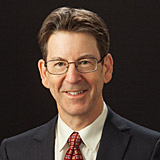When the U.S. Supreme Court overruled the Ninth Circuit’s so-called Fobian rule in the Travelers Casualty & Surety Co. of America v. Pacific Gas & Electric Co. decision (available here) in March 2007, it left for another day the question of whether unsecured creditors could recover, as part of their unsecured claims, post-petition attorney’s fees incurred during the course of the bankruptcy case.
Early Decisions Take Different Views. Since the Travelers decision, two bankruptcy courts have issued decisions but have come to different conclusions on that question.
- In May 2007, in the In re Qmect, Inc. decision (available here), the U.S. Bankruptcy Court for the Northern District of California held that unsecured creditors could recover post-petition attorney’s fees. For more on that decision, see this earlier post on the case and its analysis.
- In July 2007, in the In re Electric Machinery Enterprises, Inc. case (available here), the U.S. Bankruptcy Court for the Middle District of Florida came to the opposite conclusion, following a majority of courts that had addressed this issue unrestrained by the Ninth Circuit’s Fobian decision. See this previous post for more on the Florida decision.
New Article Sides With Majority View. A new article to be published in the Winter 2007 issue of the American Bankruptcy Institute Law Review, gives context for these differing views and argues that the majority position is the correct one. The article, entitled "Interpreting Bankruptcy Code Sections 502 and 506: Post-Petition Attorneys’ Fees in a Post-Travelers World," was written by Professor Mark S. Scarberry, Professor of Law at the Pepperdine University School of Law. Professor Scarberry is the current Robert M. Zinman Scholar in Residence at the American Bankruptcy Institute. A copy of the article is available for download from the Social Science Research Network website by following this link.
A Textual Argument. The centerpiece of the article is Professor Scarberry’s interesting analysis of the interplay between Sections 502(b) and 506 of the Bankruptcy Code and the textual argument he advances to support the majority view.
- A key building block of this argument is his conclusion that the language in Section 502(b), which provides that a claim is to be allowed in an amount "as of the date of the filing of the petition," precludes inclusion of post-petition amounts as part of the Section 502(b) claim allowance.
- He then argues that Section 506(b)’s function is to add post-petition interest and "reasonable fees, costs, and charges" to this Section 502(b) allowed amount but only for secured claims (determined under Section 506(a)) and only when the value of a secured creditor’s collateral exceeds the allowed amount of the claim, determined under Section 506(a).
- He contends that Section 506(b)’s use of the phrase "there shall be allowed" demonstrates that its purpose is to allow amounts not otherwise allowable under Section 502(b).
The Debate Continues. Professor Scarberry’s article is an excellent resource for those seeking to understand the history and background of this issue. It also provides debtors, creditors committees, and their attorneys with arguments to oppose an unsecured creditor’s attempt to recover post-petition attorney’s fees. The issue, however, remains far from settled in the courts.
- The majority view, now bolstered by the arguments in Professor Scarberry’s article, will probably prevail in many cases.
- Still, the In re Qmect decision shows that at least some courts may allow these fees.
Until this issue is resolved by the Supreme Court, or at least by more Courts of Appeals, unsecured creditors with a contractual or nonbankruptcy statutory right to attorney’s fees may try their luck and seek allowance of post-petition attorney’s fees in bankruptcy cases as part of their unsecured claims.

